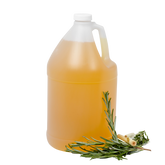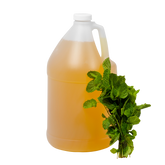
Next time you run across the term “Castile Soap,” take a minute to consider what it means. Does it mean the soap you’re looking at is made with olive oil? Or does it mean, more generally, that it’s made with vegetable oil rather than animal fat? And when you hear the term “Castile,” what comes to mind, bar soap or liquid?
So, What is Castile Soap?
For some, including the Spanish soapmakers Andalucia, “Castile” means something very specific. Not only does it refer to the area of Spain where the soap reportedly originated (Castilla, in Spanish), it also means soap made with 100% extra-virgin olive oil, and in Andalucia’s case, “an exceptional unfiltered oil from a small producer who has his grove very close to our factory here in Málaga province.” On their website, they expand on this position by regretting how the name Castile has been corrupted by soapmakers using low-grade olive oil or “cheap filler oils such as palm, canola etc.”
The American View
Not everyone feels this way, or this strongly. Especially in America. But then, not all soapmakers have an olive grove right outside their window. For many in and out of the soap business, the important distinction – as it has always been – is between vegetable-based soap and soap made with animal fat.
The “Frequently-Asked-Questions” section on drbronner.com gives this historical description of Castile soap: “In earlier centuries, an all-vegetable-based soap was made in the Castile region of Spain from local olive oil. By the turn of this century, ‘Castile‘ had come to mean any vegetable oil-based soap, as distinct from animal (tallow) fat-based soap.” From this point of view, olive oil just happened to be the vegetable oil available near where the historical soapmakers lived. For non-Castilian soapmakers – us, for example – other oils can serve just as well.
The European View
The European view, with nearly all of its history prior to the advent of liquid soap, can’t help but draw the line at bar soap. The American view is not only more inclusive – not limiting vegetable oils to olive – but more current. While there are exceptions – Dr. Bronner’s own bar soap, for one – the current view, what consumers expect when ordering online or buying in a store, is a slightly viscous liquid soap made with vegetable oil, and if scented, with all-natural ingredients. That’s the Castile Liquid you’ll find on our site.
The Story Gets Complicated
Here’s the problem with a drawing a line in the sand, as the Spanish soapmakers Andalucia have. You better be right. Which is where the story gets complicated. Not everyone agrees that Castilla is the point of origin for the purest of olive-oil soaps. Another soap, made exclusively from olive oil and called simply “white soap,” originated in Northern Italy hundreds of years before “castile” soap appeared in Spain.
The Real Source

In the end, all European claims to purity must surrender to an even older and more fabled source – Aleppo soap, made of olive oil and laurel berry oils, a soap whose origins are reported to be the Syrian city of Aleppo and go back historically at least a thousand years, even further in legend. Popular reports have Aleppo soap being used by Cleopatra and Queen Zenobia of Syria.
The Truth Is
The argument over what true castile soap is won’t end soon. In general, purist vs. practical arguments tend to go on. But the truth is, Castile soap is two things at once – a very specific geographic reference (like Champagne) and a more general, useful distinction. It’s both. And there’s nothing wrong with that.
Castile Soap Customization
Here’s the key difference: liquid Castile soap and bar soap are both finished products, meaning they’re ready to go as is. Liquid Castile, however, can still be significantly altered once it’s finished. You can’t inject additional scents into bar soap once you get it, and you certainly can’t change its consistency — at least not without fundamentally breaking it down.
Given some heat and a good immersion blender, though, liquid Castile can be scented to make a personalized, signature blend. It can be thickened into a shower gel and any number of viscosities in between. It can also be diluted for foaming soap and, with the right amount of water, be the perfect spray cleaner for uses all over the house. One of our customers, an auto detailer who’s done a number of tests to find the right viscosity, calls it the best glass cleaner he’s ever used.
Basically, liquid Castile soap is an amazingly versatile product, and Castile fans are able to customize different qualities of the soap to use it effectively in a variety of settings.
How to Use Castile Soap?

Straight out of the bottle, it’s good for the shower as a body wash and shampoo. It’s good for the bathroom sink as a hand wash, and for the kitchen sink as a dish soap, but even we were surprised by customers reporting that it’s also a perfectly good toothpaste.
From what we hear, the taste can take some getting used to, and the idea of washing your mouth out with soap doesn’t have positive connotations. But since it’s vegetable-based, Castile is safe to eat, and it works as well as commercial brands without bringing unwanted ingredients to brushing. Sometimes looking at a product in new ways can remind us of what it’s always been.
How to Dilute Castile Soap?

Have castile soap that is too thick or has too strong of a scent? You can simply dilute it! One of our earliest liquid soap customers at Botanie was an auto detailer from Texas. He purchased one of our foaming soaps, and while we weren’t looking, started experimenting with the consistency until he found a sweet spot in the balance of soap and water. When he did, he called us to say he’d found the best glass cleaner he’d ever used!
We’ve found the same thing to be true in our own homes. As we discovered when we introduced our foaming soap, straight castile is too thick to work well with foaming tops. But if you dilute castile in the ranges of 60-70% soap to 30-40% water, and you tweak the consistency to work best with your particular foaming top, you wind up with a mixture that foams well without plugging the dispenser.
Looking for a stellar glass cleaner? In this case, the ratios lean heavily on water, with 5-15% soap to 85-95% water. The ranges are as wide as they are because not all castile soap is the same and the best balance is just enough water to not leave streaks on glass.
Spray-cleaner ratios are more variable. Depending on the surface, and how much rinsing you’re able to do, percentages can range widely between the ratios for foaming soap and glass cleaner.
How to Thicken Castile Soap?

Pure Castile soap is generally thinner than most people prefer. For those people, and for our customers selling to those people, there are ways to make it thicker. Of course, Google will give you tons of options with which to thicken Castile, salt and a salt-water solution being the most common. At Botanie, we prefer using organic guar gum, which is available locally in many places, but easily available online.
The real possibilities for viscosity are endless. If you’re looking for a slightly thicker consistency than standard castile, you can add as little as 10 grams of guar gum per gallon of castile. If you’re looking for more of a shower-gel consistency, you can add as much as 40 grams per gallon. Within those parameters, the best consistency is really a matter of preference.
At Botanie, our castile soap is created from a perfect blend of organic vegetable oils and natural essential oils. Our customers can simply mix and match among seven scent blends to equal their desired total bottle order.
Mix It Up
With castile soap, mixing thoroughly is a big deal. The consensus among soapmakers is you can never stir soap enough, and the best tool for mixing is a good stick or immersion blender.
The other element of mixing is heat. While you don’t need to heat castile to dilute it, for ingredients other than water – essential oils, organic guar gum – heating the castile to around 120 F before mixing will make the process go better overall.
To avoid clumping when adding guar gum, wet it with vegetable glycerin prior to adding it to the soap, so it’s no longer a solid, but more like honey. Vigorous mixing will work also, but wetting the guar gum first can reduce the amount of vigorous mixing you’ll need to do. We don’t want you to tire your arms too much!
The Botanie Difference
We know castile can be several things, but the uses for liquid castile as it is continues to grow. Our castile, straight from the bottle on a sponge, cleaned grime from the bathtub that several applications of a leading natural tub and tile cleaner didn’t. It’s time to put the chemical cleansers away and attack those tough jobs with Botanie’s certified organic castile soap.





